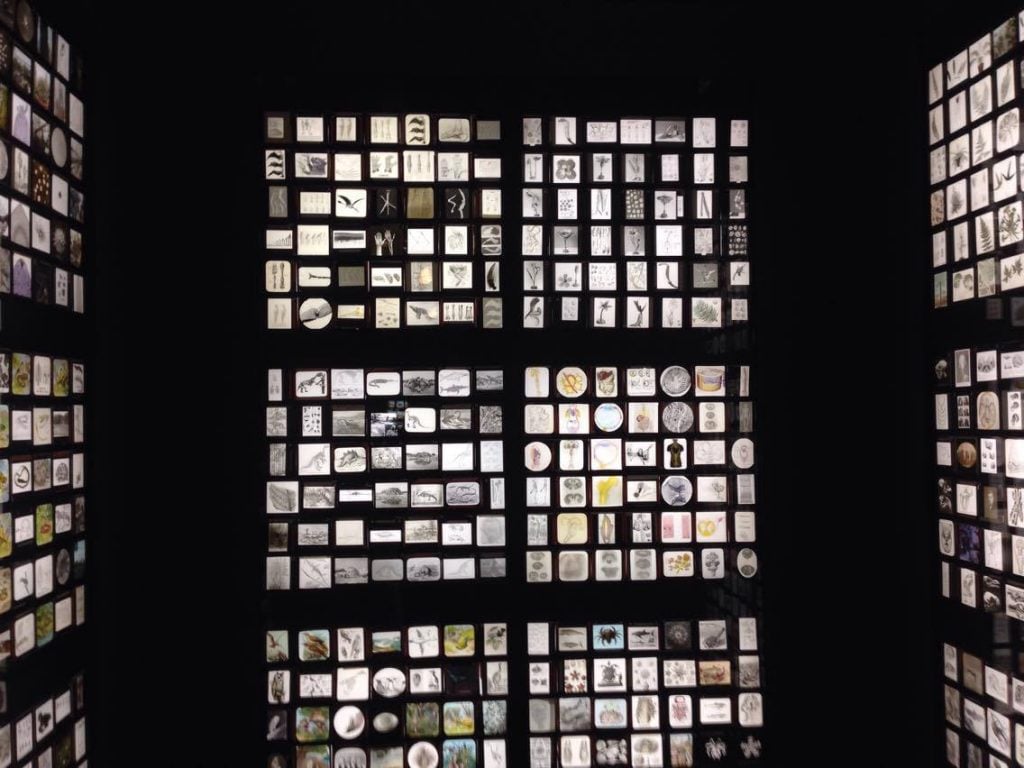
George Loudon’s Object Lessons celebrates the art and science in intriguing historical curiosities, on display publicly for the first time at the Manchester Museum. The collection presents a novel glimpse of life and nature from the perspective of Victorian scientists. Loudon has long been a serial collector, but the subject and focus of his collections has changed greatly over the years. Despite amassing an impressive collection of contemporary art, his interests shifted after visiting the Harvard Museum of Natural History, where he recognised historical scientific objects as beautiful works of art in their own right. A deep fascination with these oddities gradually resulted in the accumulation of over 200 pieces, each of which were expertly crafted to help visualise the hard-to-visualise within the natural world and, in doing so, educate.

Pieces are presented across several broad themes. In particular, Craftsmanship pays close attention to the incredible detail and fidelity encapsulated in the Blaschka glass models, masterfully constructed by German glassworkers Leopold and Rudolf Blaschka. These stunning recreations of soft-bodied organisms, most notably the Portuguese man o’ war, are beguilingly life-like and allowed Victorian scientists to faithfully capture natural wonders when underwater photography was still a fantasy. In a way, these models retain this significance, allowing you view these fascinating creatures up close and in three dimensions. Recording the Extraordinary focuses on how scientists sought to represent unusual or transient phenomena, the momentarily spectacular, which before bordered on fable and fantasy. How does one capture the wind? Or represent the Aurora Borealis? The answers are undeniably intriguing to view. Much of the collection relates to the ways scientists sought to portray what were, to most people, abstract concepts that went beyond what we ordinarily observe. Framing Time explores the immensity of geological time and the nature of life millions of years ago, whilst Revealing the Microscopic exhibits the minute detail of organisms down to the very smallest. But there is also an emphasis on how important pieces and models were in 19th Century teaching, exemplified in Understanding the Body (starring the fascinating papier-mâché skinless wild turkey), Looking Inside, and of course the Teaching Museum, the ‘Lanterium’ of Victorian life sciences lecture slides of which are extremely easy to get lost in.

The purpose of the exhibition is more aesthetic than scientific, but it demonstrates an interesting interplay between art and science. Scientific pieces are presented as art and it wonderfully showcases the art now often lost in science and education. The pieces themselves in their original form and purpose highlight the beauty of the natural world in a way that made it accessible to 19th and early 20th century students. These highly complex and detailed models were once the only way to bring the microscopic or the hard-to-conceptualise to a wider audience, a far cry from how science is taught in universities today—itself something the exhibition alludes to with the inclusion of modern technologies, such as interactive 3D models recreated from Victorian samples. The intrigue lies not only in the beautiful pieces themselves, but what they represent: the progress in our scientific knowledge; the different ways in which science was communicated; and—an interesting aspect that has been lost—the ‘scientists that are artists’. These pieces may have lost their scientific significance, but they tell a story about scientific development and are given a new lease of life in an artistic context. This is an absorbing collection that is well worth delving into, and one that appears very at home in the Manchester Museum.

Filed under: Art & Photography
Tagged with: collection, collector, education, George Loudon, historical curiosities, history of science, Manchester Museum, Object Lessons



Comments